Affiliate links on Android Authority may earn us a commission. Learn more.
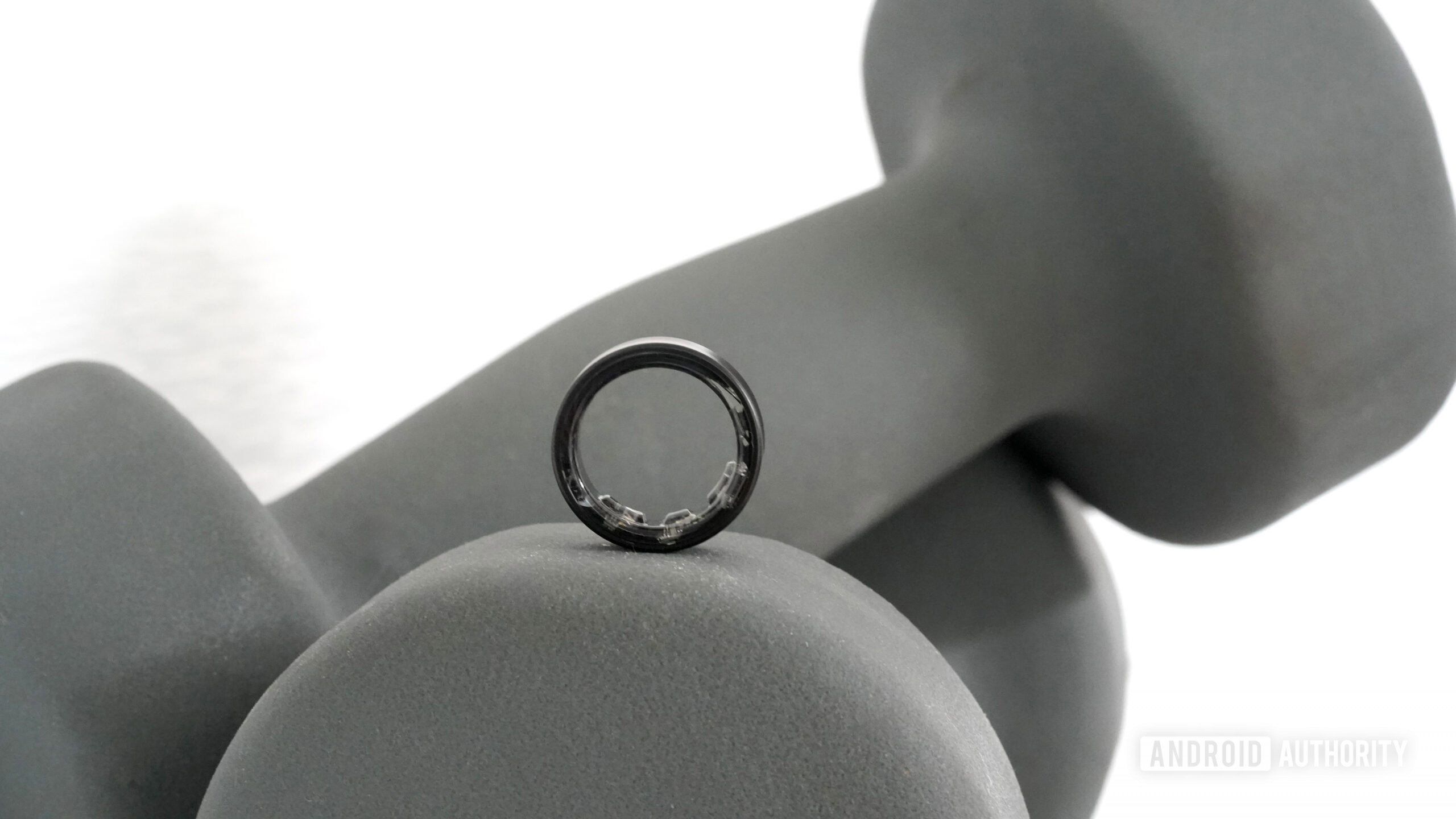
Samsung Galaxy Ring is good for Galaxy users, but not for me
February 20, 2025
Samsung Galaxy Ring
MSRP: $399.99
What we like
What we don't like
Samsung Galaxy Ring
I’ve been testing wearables and consumer health tech for years, and the Samsung Galaxy Ring has unexpectedly become one of the most intriguing devices I’ve tested in a very long time.
On one hand, a smart ring from a company as large and well-resourced as Samsung has the potential to elevate the entire landscape. The company’s mixed portfolio also opens the door to unique multi-device integration across its phones, smartwatches, tablets, true wireless earbuds, and much more. On the other hand, my first-hand experience of the Galaxy Ring’s underbaked features and so-so accuracy emphasize that this is very much a first-generation device — and that’s without acknowledging that some of the ring’s most useful features only apply to the Samsung-exclusive user pool.
To cut to the chase, the Galaxy Ring isn’t perfect, but Samsung nailed a few key elements and launched a new product line with a lot of promise.
An inspired design
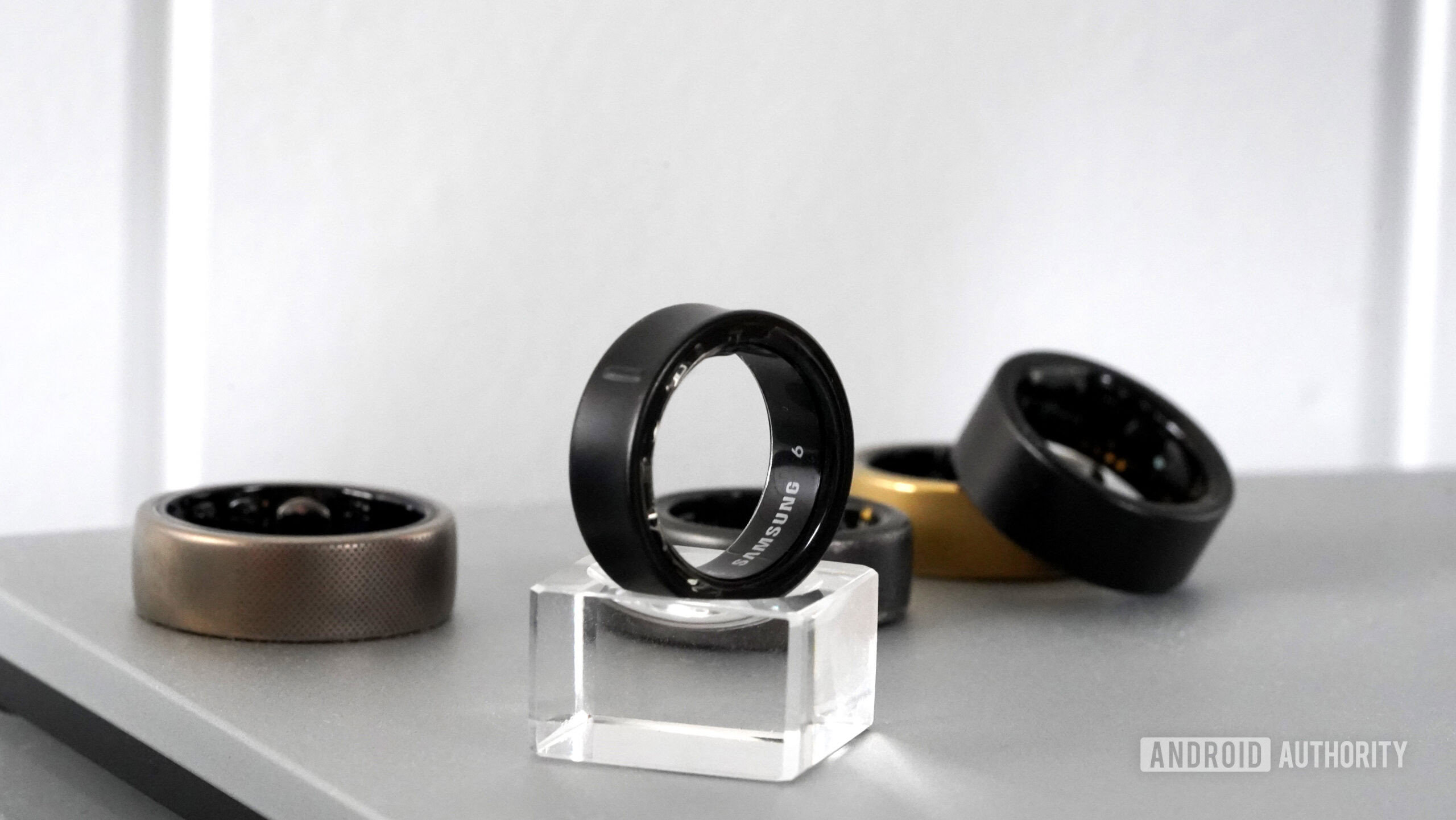
This may be Samsung’s first finger-based wearable, but it’s far from the first smart ring to hit shelves, and it’s far from the first I’ve tested. Anyone who has ever worn, tested, or simply seen one knows most smart rings look fairly similar. Like others, Samsung offers a lightweight, minimalist look in neutral colorways intended to blend in with shoppers’ day-to-day looks. With slightly narrower 7mm concave sides and a thinner 2.6mm build, the Galaxy Ring does look more petite than rivals like Oura and is even slightly more comfortable. I’ve also worn the ring for months now and the finish is still pristine, something that can’t be said about most smart rings.
A view from the inside of the ring reveals a mess of tech and LED lights and three bulbous sensors that need to be worn on the underside of the finger for accuracy. These sensors are represented by an indicator line on the outside of the ring as well, so you can consistently check to see if you’re properly aligned. Despite using Samsung’s helpful sizing kit, the ring that was deemed to fit me does occasionally spin on my finger, so the line is helpful to sort it out. Oura has a similar detail on its rings, but the line is more subtle and blended into the design compared to Oura’s.
With a basic smart ring design, the Galaxy Ring is lightweight, comfortable, and stands up to most daily activities.
I didn’t wear the Galaxy Ring for certain workouts or chores and removed it for swims as well out of sheer paranoia. Anything involving a weight, bar, or handle is less than ideal in a smart ring, as is applying lotions or sunblock. I did, however, keep the ring on while assembling furniture, painting furniture, and moving said furniture, and the impact on my comfort was unremarkable. In other words, the Samsung Galaxy Ring is an unobtrusive tracker that stands up to most daily activity, which can be said about most smart rings.
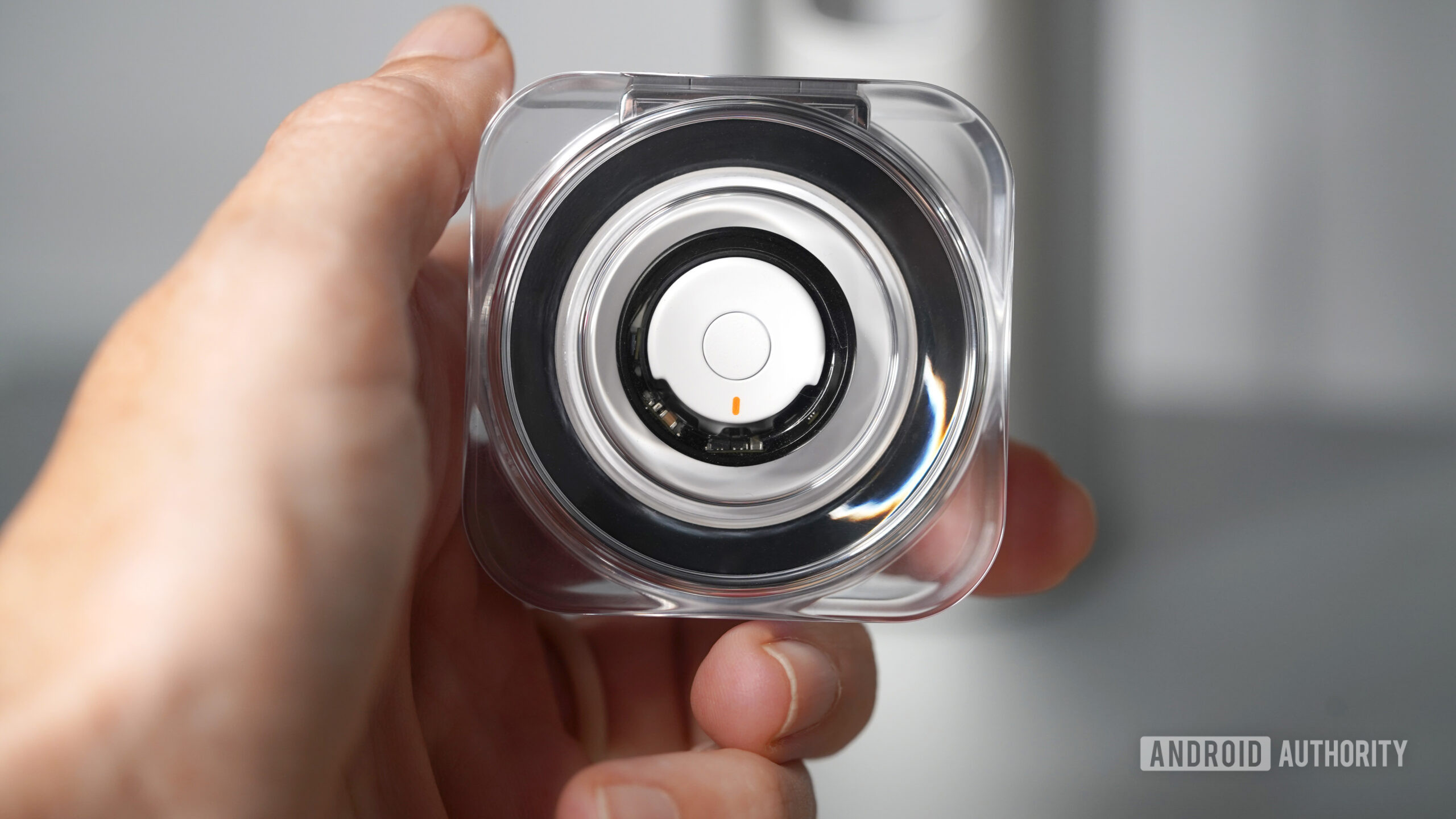
Just as Samsung didn’t reinvent the wheel in aesthetics, the company also drew inspiration for my favorite feature of the Galaxy Ring: its portable charging case. Each device ships with a transparent, clamshell-style charging case with a charging post perfectly sized to your ring. In addition to helpful lights for communicating charge levels, the case packs its own built-in battery so you can power up your wearable on the go. I absolutely love the portability of this design and the fact that I don’t need to plug in to top up my device. Throughout this review, I happily transported the case in my pocket, a fanny pack, and the bottom of a backpack, but mostly, I left it neatly on my desk, sans unruly cable.
I love the convenience of the Galaxy Ring's portable charging case with its own built-in battery.
Again, Samsung isn’t the first brand to launch this type of charging apparatus, we’ve seen the same idea from RingConn as well. I appreciate that the company pulled successful cues from the existing market. At the risk of sounding easily impressed, I would even say Samsung’s more attractive ghostly case is an improvement to the concept. I found the case will charge the ring from zero to 40% in about 25 minutes, after which charging slows down substantially. A full power-up from zero to 100% takes close to two hours. In an ideal world, this wouldn’t be an issue as this is the kind of wearable you want to have on 24/7 for all the health tracking. Unfortunately, you will have to take your Galaxy Ring off your finger to charge semi-regularly, which brings me to the issues I encountered with Samsung’s hottest product of 2024…
Notable shortcomings
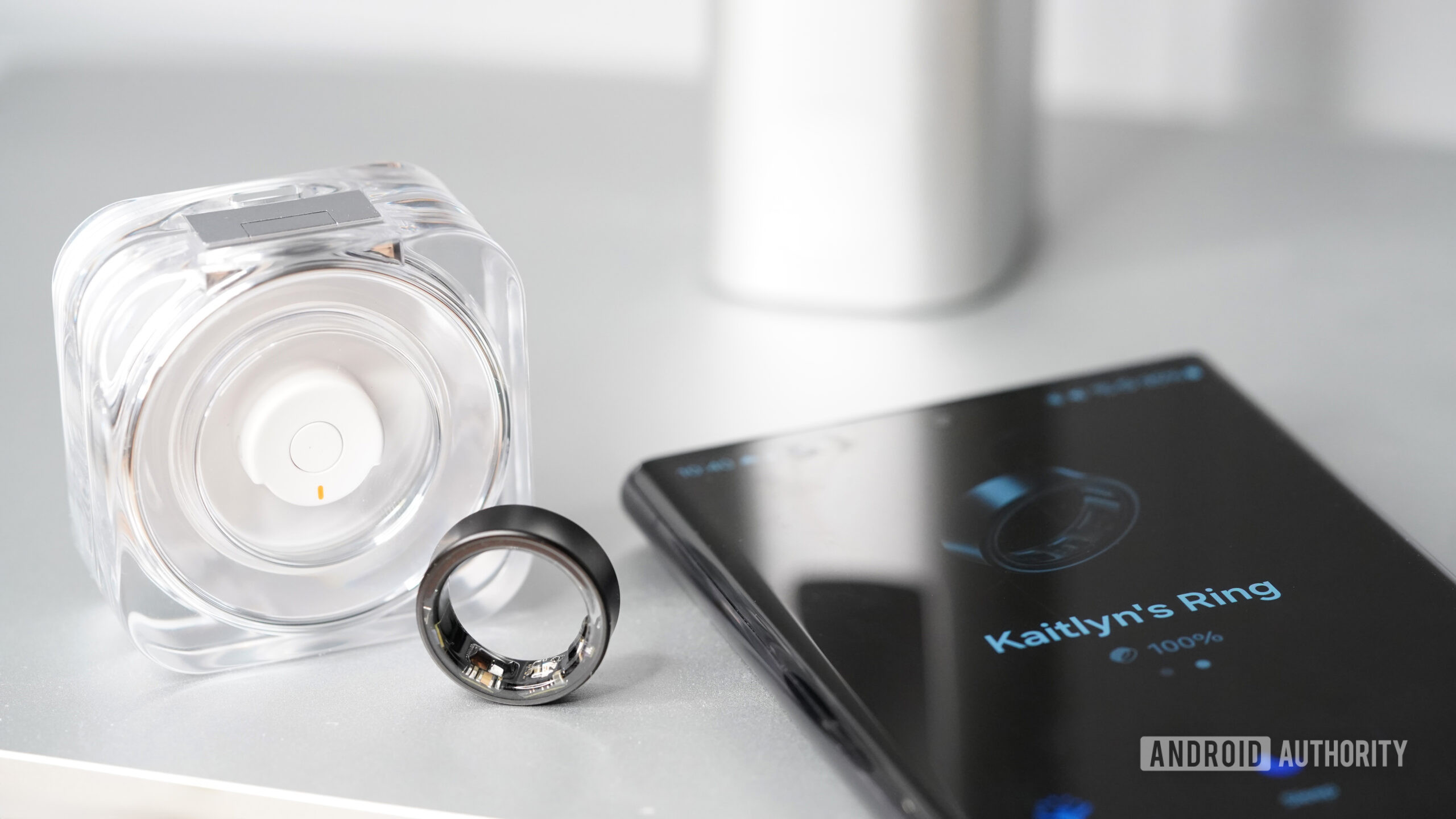
Sadly, things really start to lose their luster beyond the ring’s build. For starters, the Galaxy Ring’s battery life is decent but not as good as I was hoping. Throughout my month-long testing process for this review, I consistently hit about four days of use between charges, a measurement that falls short of Samsung’s six to seven-day claims. I do wear a smaller size which means my ring packs a smaller battery, and I certainly put the ring to work tracking multiple activities and overnight stats. Still, I wanted to see truly week-long battery life from the Galaxy Ring, especially considering Samsung is encouraging shoppers to buy the ring in addition to a smartwatch. The power-saving benefits of the smaller form factor should be very pronounced to justify splurging for two products.
The Galaxy Ring doesn't deliver the nearly weeklong battery life I was hoping to see.
Of course, if you can afford to equip both the Galaxy Ring and a Galaxy Watch, there are battery-savings to be gained. Samsung automatically prioritizes the appropriate device for your activity, disabling some sensors on the ring to further extend use between charges. When I wore my Galaxy Watch Ultra and Galaxy Ring simultaneously, battery life on the latter landed much closer to six days.
Unfortunately, the ring also didn’t impress me overnight, the time when smart rings typically shine. Small and screenless, the Galaxy Ring should be the perfect bed mate. One would think. For whatever reason, be it fit or design, the LED lights on the internal side of the ring constantly flash in my face as I’m trying to fall asleep. It’s not out of control, like a college roommate initiating a rave or anything, but it’s definitely bright and jarring. I find this much more annoying than an AMOLED display, which can at least be set to bedtime or even theater mode.
In the morning, I also wasn’t sold on the data recorded. My sleep data from the Galaxy Ring has not aligned as closely with that of my trusted devices as I was expecting on a sleep-focused wearable. On the day shown above, for example, my Oura Ring 3 recorded much less sleep and gave me a sleep score of 41. My Withings sleep mat also registered more awake time overnight. In my mind, the ring’s ability to track bedtime stats while I charge my smartwatch overnight was one of the biggest selling points. Instead, I’m left dubious about the sleep scores, and I’m still underwhelmed by the Samsung sleep-tracking platform in general. As much as I love a cute sleep animal, I was hoping for greater accuracy and more in-depth insights. Though Samsung now leverages AI for analysis, it still feels fairly surface-level. I’m also still skeptical about my Energy Score results, as I talked about in my Galaxy Watch Ultra review.
Generally speaking, I’ve found other basic metrics fairly accurate, including resting heart rate, blood oxygen, and stress, though my steps have been slightly exaggerated. During activity, though, my heart rate measurements have been quite bad. This could be a larger issue with the form factor and the reason Samsung recommends swapping on a watch for workouts, but I definitely would not recommend the Galaxy Ring as a dedicated fitness companion at this point. It also doesn’t have a built-in GPS, so it’s not a great pick for outdoor training purposes anyway.
More means more
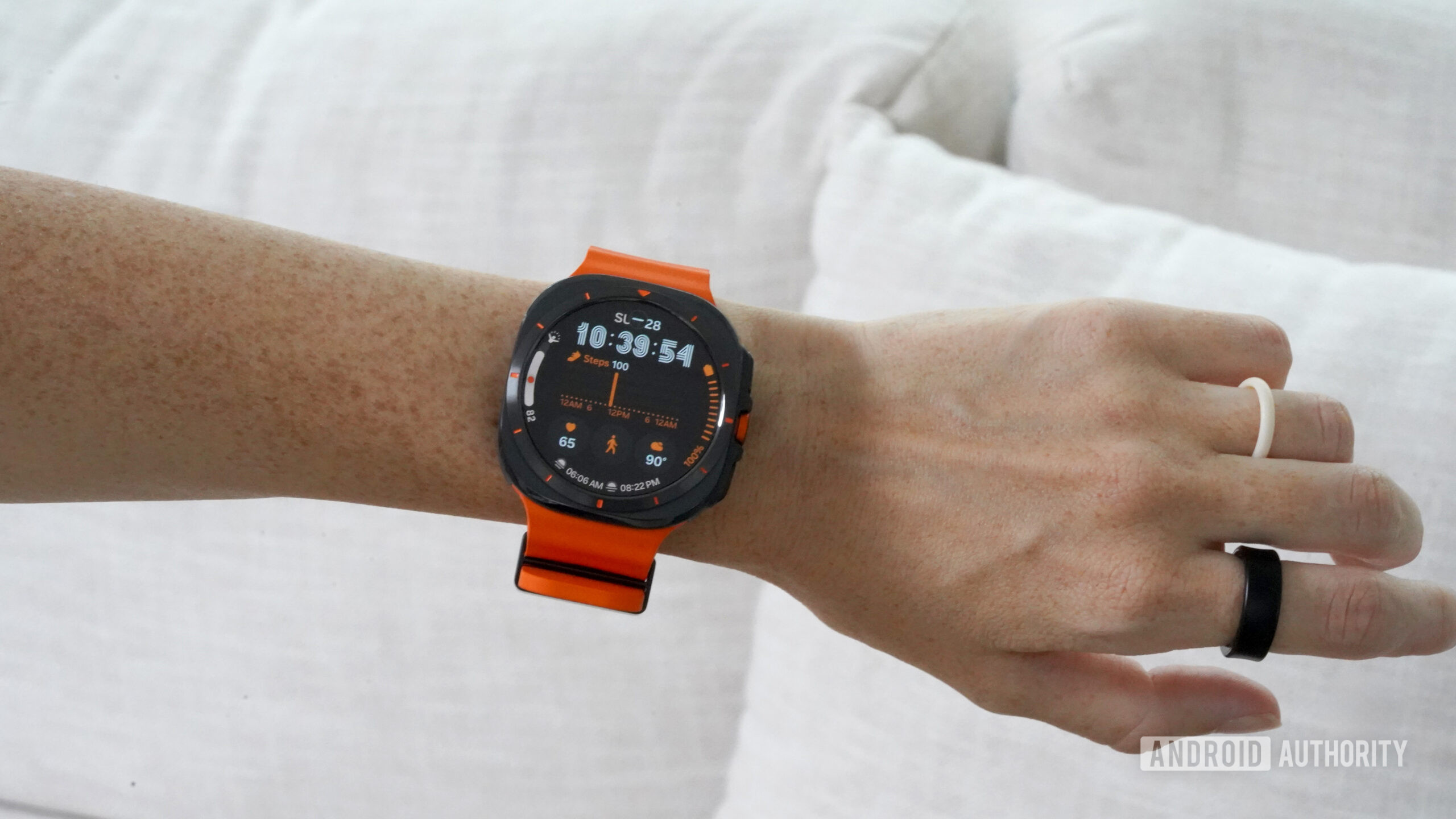
The strength of the Samsung Galaxy Ring lies in its name and role within an existing ecosystem. As mentioned, the ring offers useful collaborative tracking when paired with a Galaxy Watch. Even with its imperfections, I enjoyed pairing my devices and having the option to leave my watch behind without missing basic stats. It also boasts unique integration with Galaxy phones. With the ring on hand, you can control simple actions, like snapping a photo, by double-pinching your fingers. Samsung also supports Find My Ring on Samsung Find, so it’s easier to locate your ring if you slip it off (I can say from experience that it’s quite tiny and easy to lose on the assorted surfaces of your home.
Some health features also require a Galaxy phone, ensuring that only Samsung loyalists have access to the best possible experience. These include AI tools like Wellness Tips and Energy Score. Samsung’s watches also gatekeep features, only offering advanced tools like FDA-approved ECG, blood pressure detection, and irregular heart rate rhythm notifications to Samsung phone users. In short, the more you drink Samsung Kool-Aid, the more you can access, as is true of almost any product in the wider Galaxy ecosystem. My issue here is I don’t use a Galaxy phone as my daily driver, so I’m already at a disadvantage that I don’t have when using any of the other smart rings I have on hand.
Watch-ring integration isn’t a brand-new concept, of course. Amazfit offers the same relationship on its own smartwatches and Helio Ring. However, Samsung is a larger name in wearables and has a much more established fan base across tons of devices. It is very exciting to imagine how additional features on a refined smart ring could continue to weave into the ecosystem, though it does mean the Galaxy Ring isn’t the perfect pair for anyone outside of Samsung’s increasingly walled garden.
Samsung Galaxy Ring review: Is it worth it?
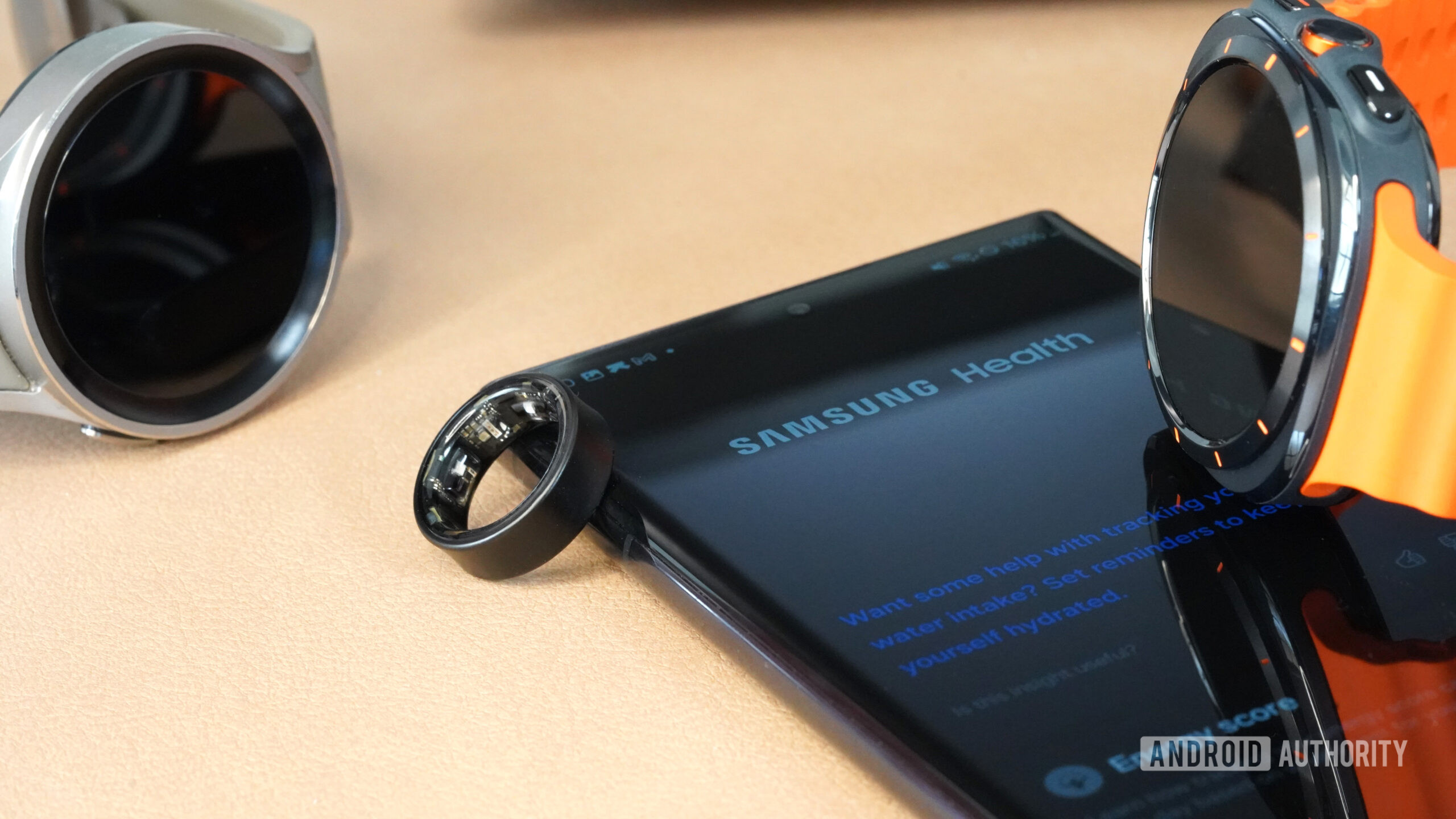
I won’t curb my excitement about a finger-based wearable from a reputable household name. I hope the Galaxy Ring lights a fire under a certain California-based company to really drive competition and elevate the smart ring market. Overall, the Galaxy Ring has a lot to like, including a comfortable, attractive build, a fantastic charging experience, useful basic tracking tools, and unique integration. However, it’s also a first-draft attempt at a form factor that is growing increasingly competitive, and I wouldn’t recommend it yet for most shoppers.
For starters, the Galaxy Ring is very expensive for what it can actually do and do well in its current form. Sure, it doesn’t ask users to pay an ongoing subscription (for now), unlike the Oura Ring, but it does take a significant chunk out of the wallet. When you factor in that it’s most useful as a sidekick to a Galaxy Watch, we’re now talking about two pricey purchases. Secondly, I’m not thrilled with the sleep-tracking experience. I’ve tested worse for sure, but compared to devices from Withings, Oura, Fitbit and even Apple, the data just isn’t consistent enough.
The Galaxy Ring is absolutely worth considering if you are already locked into the Galaxy ecosystem.
Finally, the ring isn’t built for the masses. If you are already deep in the Samsung ecosystem, by all means, add the Galaxy Ring to your toolkit. If you don’t have a Galaxy watch or Samsung phone, I recommend the Oura Ring 4 ($399 at Amazon). Of course, if you are an iPhone user, the Galaxy Ring isn’t even a possibility, so I definitely recommend Oura’s alternative. Unless you desperately want a finger-based wearable, I’d recommend sticking with the Apple Watch Series 10 ($386 at Amazon) for health and fitness tracking. Anyone just looking for a screen-free experience regardless of form factor can also consider the Whoop 4.0 ($239 at Amazon), a wrist-based tracker without a display.
